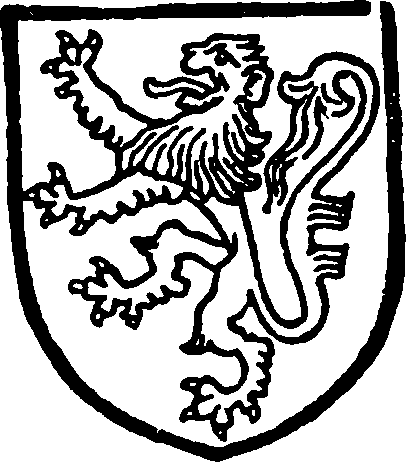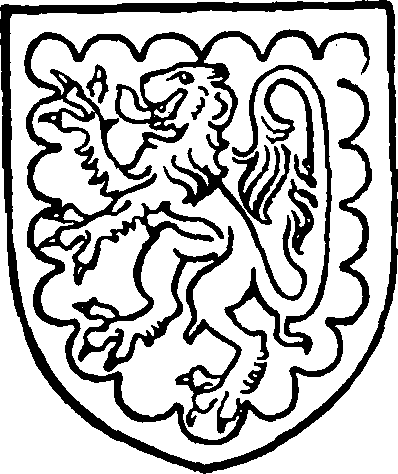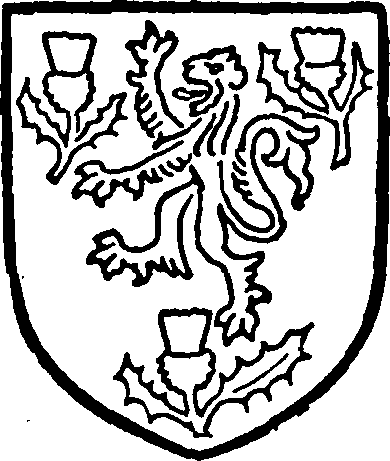A History of the County of York North Riding: Volume 1. Originally published by Victoria County History, London, 1914.
This free content was digitised by double rekeying. All rights reserved.
'Parishes: Great Langton', in A History of the County of York North Riding: Volume 1, ed. William Page (London, 1914), British History Online https://prod.british-history.ac.uk/vch/yorks/north/vol1/pp184-186 [accessed 19 April 2025].
'Parishes: Great Langton', in A History of the County of York North Riding: Volume 1. Edited by William Page (London, 1914), British History Online, accessed April 19, 2025, https://prod.british-history.ac.uk/vch/yorks/north/vol1/pp184-186.
"Parishes: Great Langton". A History of the County of York North Riding: Volume 1. Ed. William Page (London, 1914), British History Online. Web. 19 April 2025. https://prod.british-history.ac.uk/vch/yorks/north/vol1/pp184-186.
In this section
GREAT LANGTON
Langeton (xi–xiii cent.).
This parish is composed of the townships of Great and Little Langton. Its total area is 1,890 acres, of which more than half is permanent grass. (fn. 1) The subsoil is Red Sandstone, with recent Alluvium by the Swale; the soil varies from clay to gravel and sandy loam. The chief crops raised are wheat, oats and beans. The parish lies low, the height being generally about 100 ft. to 125 ft. above the ordnance datum, and the banks of the Swale, which forms the greater part of the western boundary, and its tributary the Stell are liable to floods. The small village of Great Langton lies between the Swale and the Stell at the meeting-place of lanes from the adjoining villages of Kiplin, Danby Wiske and Yafforth. Another lane runs south from Great Langton parallel with the Swale, through Langton Wood to Little Langton Grange, passing on its way Langton Hall (formerly the seat of Lord Teignmouth and now of Major William Henry Fife, J.P.), a red brick house which stands in a park of 125 acres.
The church lies among the fields to the south of the village, but at some distance both from it and from the hall. The mission chapel of the Good Shepherd was licensed to serve Great Langton in 1877.
There is a Wesleyan chapel at Great Langton and a National school.
A mill was standing here in 1652. (fn. 2) A field called Graystaynflath is mentioned in the 13th century, (fn. 3) Slaytergarthe in 1586 (fn. 4) and Sweeteenesike in 1620. (fn. 5) The capital messuage and dovecote of Great Langton belonged in the 16th century to the Danbys (fn. 6) of Thorpe Perrow (q.v.) in the parish of Well.
Manors
GREAT LANGTON and Little Langton in this parish were both among the lands of Count Alan in 1086 (fn. 7) and became members of the honour of Richmond. (fn. 8) Great Langton consisted of 9 carucates, of which in the time of the Confessor Torphin held 3½ carucates and Finegal 2 carucates. Each had a hall and Torphin had sac and soc; Tor held the remaining land and had sac and soc, but not a hall. (fn. 9) In 1086 Bodin and Hervey held this land of the count. (fn. 10) Probably Bodin had the land of Torphin, Hervey the land of Finegal, and Enisan, who is not mentioned, the land of Tor. The mesne lordship of Bodin's part descended here, as elsewhere, from him to the Fitz Hughs, (fn. 11) who were still mesne lords in the 16th century. (fn. 12) The mesne lordship of another part descended as it would if it had been in the possession of Enisan (fn. 13) to the lords of Constable Burton, of whom it was held in 1286–7, (fn. 14) and afterwards passed with that manor to the Scropes of Masham. (fn. 15) The rest was held directly of the lords of Richmond in 1286–7.
Philip de Burgh married Ismania daughter of Roald the Constable (fn. 16) and perhaps had Great Langton as her marriage portion, as their son and heir Thomas was in possession of the advowson. (fn. 17) In 1286–7 2 carucates in Great Langton belonged to Thomas de Burgh of Hackforth (q.v.), who did not, however, hold them in demesne. These lands appear to have been settled, like Hackforth, on his sister Elizabeth, who married Sir Alexander Montfort, (fn. 18) and the Montforts of Hackforth held Great Langton (fn. 19) until Thomas Montfort left daughters and co-heirs Eleanor, who died unmarried, Margaret, who married Nicholas Girlington, and Anne, who married (1) James Metcalfe, (2) Robert Conyers, (3) John Carre. (fn. 20)
Probably this land, which is not called a manor until 1820, descended like the advowson among the co-heirs and with Hackforth passed by marriage to the Duke of Leeds. By 1820 it had come into the hands of John Delavel Carpenter, Earl of Tyrconnel. (fn. 21) The trustees of the late Admiral the Hon. Walter Cecil Carpenter are the lords of the manor.
The Abbot of Jervaulx was said to hold 7 carucates of land in Great Langton of George Lord Fitz Hugh in the 15th century, (fn. 22) and in 1545 the lands of the abbey here were leased to John Sigiswyke. (fn. 23)

Stapleton. Argent a lion sable.
LITTLE LANGTON was in 1086 composed of 7½ carucates of land. Here before the Conquest Odil, Alchetel, Gernan and Sprot had lands and three 'manors'; in 1086 it was soke of Fleetham and held by Count Alan. (fn. 24) In 1317 and 1322 the 'heirs' of Brian Fitz Alan were mesne lords, (fn. 25) these being two daughters married respectively to Gilbert Stapleton and John Grey of Rotherfield, and the mesne lordship descended with the manor of Bedale (fn. 26) (q.v.). In 1286–7 the only name returned in connexion with Little Langton is that of Avis Marmion, and she then held 4 carucates of the Earl of Richmond. (fn. 27) In 1292 her son John Marmion (fn. 28) obtained a grant of free warren here (fn. 29) and in 1316 was returned as sole lord. (fn. 30) The Marmions seem, however, to have held only half the manor (fn. 31) and after 1382–3 (fn. 32) their descendants, the Greys of Rotherfield and the Fitz Hughs, had only a mesne lordship here. (fn. 33)
This manor, like that of Kirkby Fleetham, came into the possession of the Stapletons, and in 1317 Nicholas de Stapleton held lands here. (fn. 34) Sir Miles Stapleton died seised of the manor in 1372, and on the death of his childless son Thomas in 1373 these lands, which had not been included in the settlement of 1338, (fn. 35) passed to the cognate line of Stapleton of Wighill. Sir Miles Stapleton died seised in February 1399–1400 (fn. 36) and was succeeded by his son Sir John, on whose death these lands passed to his son and heir William Stapleton; his son Sir Brian was followed by a son Christopher, (fn. 37) who by his first marriage with Alice daughter of William Aske had a son and successor Robert, (fn. 38) who in 1585 conveyed this manor to Ralph Gray. (fn. 39) Ralph was knighted in 1603 and died in 1623, when he was succeeded by his son William, in February 1623–4 created Lord Gray of Warke; but the remainder of the manor of Little Langton had been settled in 1619 on Robert, son of Ralph, in tail-male. (fn. 40) In 1651 the estate of Robert Gray of Little Langton was seized by the Commonwealth Government for delinquency and he petitioned to know the reason. (fn. 41) In 1704 (fn. 42) Ralph last Lord Gray of Warke was dealing with the manor. The line of the barons of Warke now became extinct, and their estates passed to the descendants of Edward brother of the above Sir Ralph, the Grays of Howick. (fn. 43) The Grays of Howick conveyed the manor to the Grays of Billingbear, and by a deed of 1735–6 Henry Gray of Billingbear seems to have conveyed it to Leonard Smelt. (fn. 44) In 1784 Leonard Smelt, the 'Mr. Smelt' so frequently mentioned in Madame D'Arblay's Diary and Letters, (fn. 45) conveyed it to Nathaniel Cholmley (fn. 46) of Howsham. Nathaniel Cholmley married Jessie daughter of Leonard, and devised to her the manor of Langton, which she sold to a member of the family of Bethell. (fn. 47)

Gray of Warke. Gules a lion in an engrailed border argent.

Fife. Or a lion gules with drops or between three thistles with their stalks and leaves in their proper colours.
The present lord of the manor is Major William Henry Fife, J.P.
Church
The church of ST. WILFRID consists of a chancel 31 ft. 9 in. by 16 ft. with a small north vestry, nave 42 ft. 3 in. by 15 ft. 6 in. and a south porch (these measurements are internal).
The nave was built about 1140, the entrance doorways in the north and south walls being the only remaining details of that date; the former has since been blocked up and the rest of the details have been modernized. The chancel appears to be a rebuilding of the 13th century with alterations in the 14th. The building has been restored in modern times; a central tower of 'deal boards painted black' mentioned by Whitaker in 1823 (fn. 48) has been removed in favour of a modern stone bellcote at the west end. Since the erection of the church the ground level, which was presumably even with or below that of the nave floor, has risen some 2 ft. The chancel floor has been raised 15 in. above its original level.
The east window is of 14th-century date and has three trefoiled lights under a pointed head containing net tracery; the jambs are of three wave-moulded orders. There is no window in the north wall of the chancel, the only piercing being a modern doorway into the vestry. East of it is an arched recess containing the recumbent effigy of a priest in a cope (fn. 49) holding a chalice. The arch is a pointed segmental one of a wave-moulded order; the whole is probably of early 15th-century date.
The south-east window consists of three lancets and may be of 13th-century date. To the southwest is an old low-side window with a square head. Between them is a 14th-century priest's doorway of two wave-moulded orders.
The chancel arch is pointed; the plain abaci are modern. The roof of the chancel has a modern plaster ceiling with arched wood trusses. All the windows of the nave are modern; there are two in the south wall and one in the north, each squareheaded and of two trefoiled lights. The window in the west wall is traceried and also of two lights. The south doorway dates from about 1140 and has jambs of two square orders with detached shafts in the angles, having scalloped capitals; the arch is a plain round one of two square orders; the wide and shallow label is chamfered on both edges. The porch is modern and has a pointed entrance arch and a small west light. The north doorway, now blocked, is apparently contemporary with the other; it is of a single small chamfered order, and has a round head and chamfered and grooved abaci and chamfered label.
The knee-stones of the west gable are curiously carved, the north with the half-figure of a man holding two round balls, possibly meant for human heads; on the other are two beasts or crouching human figures face to face.
The bellcote above this gable is modern and contains one bell cast by Samuel Smith of York about 1680–1700.
The font has an old round bowl, but it has been recut; the stem and base are modern, as is the rest of the furniture.
Besides the tomb already described in the chancel there are at the west end two gravestones, probably contemporary with it or perhaps a little earlier, carved with floreated crosses; besides the cross one has a sword and the other a chalice and book.
The plate includes a cup with a cover and paten, both dated 1818 and inscribed 'D. D. Franciscus Drake, S.T.P. Rector.'
The registers begin in 1695.
Advowson
Late in the 12th century (fn. 50) Ismania daughter of Roald the Constable of Richmond Castle and Thomas de Burgh her son and heir granted the church of St. Wilfrid (fn. 51) of Langton to St. Agatha's Abbey. Alan son of Roald and Roald his son confirmed this grant and quitclaimed their right in the church. (fn. 52) In 1253 William de Carleton and Isabel his wife quitclaimed the right of Isabel. (fn. 53) The local family of Langton, however, asserted their title to the advowson and succeeded in recovering it. In 1255–6 Henry le Porter and Adam de Collingham, the guardians of Robert son of Eudo (fn. 54) de Langton, claimed it successfully against the abbey, and the jury in the case decided that Peter son of Eudo de Langton made the last presentation. Thomas de Burgh, chief lord, made the next presentation, whether as patron or not they did not know; but in 1242 the Archdeacon of Richmond appointed the last rector who was presented by no patron. (fn. 55) Later Robert son of Eudo de Langton and Walter de Collingham resigned all their right in the church 'into the hand of our lord Thomas de Burgh.' (fn. 56) Perhaps they found it useless to attempt to enforce their claim against the abbot, aided as he was by Thomas son of Roald de Richmond, the mesne lord. Thomas de Burgh had more success and it was said to be in his possession in 1282. (fn. 57) The abbey made another attempt to seize it, for in 1291–2 Hugh son of Robert de Langton and Robert son of Adam de Collingham claimed the presentation against the abbot and Thomas son of Roald de Richmond (fn. 58); but after 1300, when the abbot sought the advowson against Thomas de Burgh, (fn. 59) presentations were always made by the descendants of the latter. (fn. 60) Half the advowson passed like Hackforth Manor with Margery Montfort to Nicholas Girlington (fn. 61) and afterwards to the D'Arcys of Knaith (Lords Conyers after 1644 and subsequently Earls of Holderness) (fn. 62); and on the death of Robert fourth Earl of Holderness passed with his only daughter and heiress Amelia to Francis Godolphin Osborne fifth Duke of Leeds, (fn. 63) who (as Marquess of Carmarthen) held it in 1819. (fn. 64) Simon Conyers of Danby on Ure died seised of the second moiety in 1576. His daughter and heiress Mary was wife of Henry Scrope of Spennithorne, (fn. 65) and the advowson of this moiety descended in the family of the Scropes of Spennithorne (q.v.) until 1698, when the last mention of it is found. (fn. 66)
In 1874 the Hon. Arthur Duncombe by virtue of powers given him by an indenture of 1844, with the consent of Francis John Savile Foljambe, the tenant for life, granted the advowson to certain trustees, and in 1874 it was exchanged by its owner or owners with the Dean and Chapter of York, who are now the patrons. (fn. 67)
The living is a rectory.
The Marmions and Greys of Rotherfield had a chantry at Little Langton in the 14th century, (fn. 68) but no further mention has been found of it.
Charities
The annual sum of 20s. under the name of Jenkins's dole is paid out of the Marske Estate by Mr. J. T. D'Arcy Hutton of Walburn Hall, Richmond, and is distributed in money to the poor of the townships of Great and Little Langton.
The school is endowed with a sum of £666 13s. 4d. consols held by the official trustees, arising from a gift of Mrs. Julia Redfearn by deed dated 5 January 1849.
In 1843 the Rev. Francis Drake by will left a legacy for the poor, now represented by £89 11s. 8d. consols with the official trustees; the dividends, amounting to £2 4s. 9d., are distributed annually among poor women in February and August.